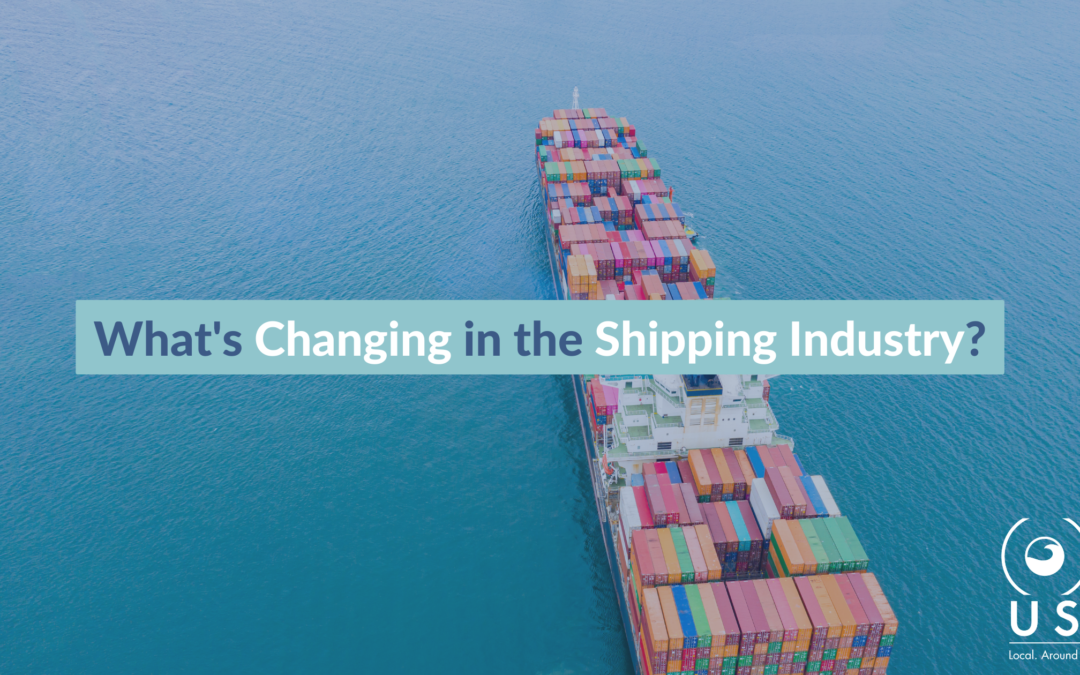
What’s Changing in the Shipping Industry?
The ocean freight industry is facing multiple challenges that are driving significant changes in the way carriers operate. From environmental concerns to digitization and automation, and increasing price competition, carriers must navigate a complex landscape to remain competitive and profitable. With governments and consumers increasingly focused on sustainability, carriers are under pressure to reduce their carbon footprint, adopt more sustainable practices, and implement sustainability clauses in their contracts. At the same time, the COVID-19 pandemic has accelerated the adoption of digital platforms and automation, as carriers seek to improve efficiency, reduce costs, and increase visibility. Lastly, consolidation and new technologies are driving increased competition in the market, forcing carriers to compete on price while finding ways to reduce costs and improve efficiency. Let’s explore these challenges and the strategies carriers and shippers can adopt to navigate the changing landscape of the ocean freight industry.
Environmental Concerns
The focus on environmental sustainability in the ocean freight industry has been growing steadily over the past few years. With increasing concerns about climate change and its impact on the planet, governments and regulatory bodies around the world have been putting pressure on the industry to reduce its carbon footprint and adopt more sustainable practices.
One of the most significant ways in which carriers can reduce their environmental impact is by using low-carbon fuels. Currently, the majority of vessels in the industry run on heavy fuel oil, which is a significant source of greenhouse gas emissions. However, there are alternative fuels available that are significantly less polluting, such as liquefied natural gas (LNG) and biofuels. These fuels emit fewer pollutants and have a lower carbon footprint than traditional fuels, making them a more sustainable option.
Another way in which carriers can reduce their environmental impact is by implementing more efficient vessel designs. Newer vessel designs can be more energy-efficient and emit fewer pollutants, which can help to reduce the industry’s carbon footprint. For example, some carriers are now investing in vessels with hybrid or electric propulsion systems, which are significantly more efficient than traditional propulsion systems.
In addition to these practices, carriers may also push for contracts that include sustainability clauses. These clauses can include commitments to reducing carbon emissions, using sustainable materials, and implementing sustainable practices throughout the supply chain. By including these clauses in their contracts, carriers can demonstrate their commitment to sustainability and differentiate themselves from their competitors.
Ultimately, the focus on environmental sustainability in the ocean freight industry is not just driven by regulatory pressure, but also by consumer demand. As consumers become more aware of the environmental impact of their purchases, they are increasingly looking for sustainable options. By adopting more sustainable practices, carriers can meet this demand and position themselves for success in the future.
Digitization and Automation
The COVID-19 pandemic has had a significant impact on the ocean freight industry, accelerating the adoption of digital technologies and automation. The pandemic highlighted the need for more resilient supply chains and increased the demand for real-time data and visibility. As a result, carriers have been investing in digital platforms and automation to improve the efficiency and agility of their operations.
Carriers are more commonly adopting digital platforms for booking and tracking shipments. These platforms allow shippers to book and manage their shipments online, providing real-time visibility into the status of their cargo. By adopting these platforms, carriers can streamline their operations, reduce paperwork, and improve communication with their customers.
In addition to digital platforms, carriers are also investing in automation to increase operational efficiency. This includes the use of robotics and artificial intelligence to automate certain processes, such as cargo handling and documentation. By automating these processes, carriers can reduce costs, improve accuracy, and increase the speed of their operations.
The adoption of digital technologies and automation in the ocean freight industry is driven by the need to improve efficiency, reduce costs, and increase visibility. By adopting these technologies, carriers can improve the customer experience, reduce the risk of errors, and increase the speed of their operations. As a result, we can expect to see an increased focus on digitalization and automation during the current contract season and beyond.
Increasing Price Competition
In recent years, the ocean freight industry has seen a significant increase in competition between carriers. With more carriers entering the market, established carriers are facing pressure to compete on price, which can lead to a squeeze on profit margins.
One of the main drivers of this competition is the ongoing trend of consolidation in the industry. Over the past few years, we have seen a number of mergers and acquisitions among major carriers, which has led to a reduction in the number of players in the market. This consolidation has created a more concentrated market, with fewer carriers controlling a larger share of the business. As a result, carriers are increasingly competing on price to maintain their market share.
In addition to consolidation, the rise of new technologies and digital platforms we discussed above has lowered barriers to entry for new players. Startups and tech companies are entering the market with innovative solutions that are disrupting traditional models of ocean freight. These new players are often able to offer more flexible and efficient services, putting pressure on established carriers to adapt or risk losing business.
The increased competition is putting pressure on profit margins for carriers, who are struggling to maintain their margin while still competing on price. This pressure is being felt across the industry, from small regional carriers to the largest global players. To remain competitive, carriers are looking for ways to reduce costs and improve efficiency. This can include investing in new technologies, optimizing routes and vessel capacity, and streamlining operations.
For those looking to move freight, the increased competition can be both a blessing and a curse. On one hand, the competition can lead to lower prices and more options for shipping goods. On the other hand, it can also lead to instability in the market, with carriers coming and going and pricing fluctuations that can impact supply chains.
Overall, the increasing competition between carriers is a trend that is likely to continue throughout 2023 and beyond. Carriers will need to adapt to this new reality by finding ways to remain competitive while maintaining profitability. For their customers, the key will be to stay informed and agile, adapting to changes in the market and working with carriers to find the most cost-effective and efficient shipping solutions.
The shipping and logistics industry is always changing, like everything else. Businesses adapt to shifting conditions, and the past few years have certainly altered the landscape. Whether they’re environmental improvements, digitization and automation, or simply decisions or investments intended to stay competitive, you can safely bet that businesses will do what they can to meet the market’s demands. But keeping up to date on these kinds of changes and how they’ll impact your business is extremely difficult—and potentially expensive. We recommend working with a partner who can help you find the best possible solutions for you, regardless of what’s changed. Let’s talk about how we can help you.


